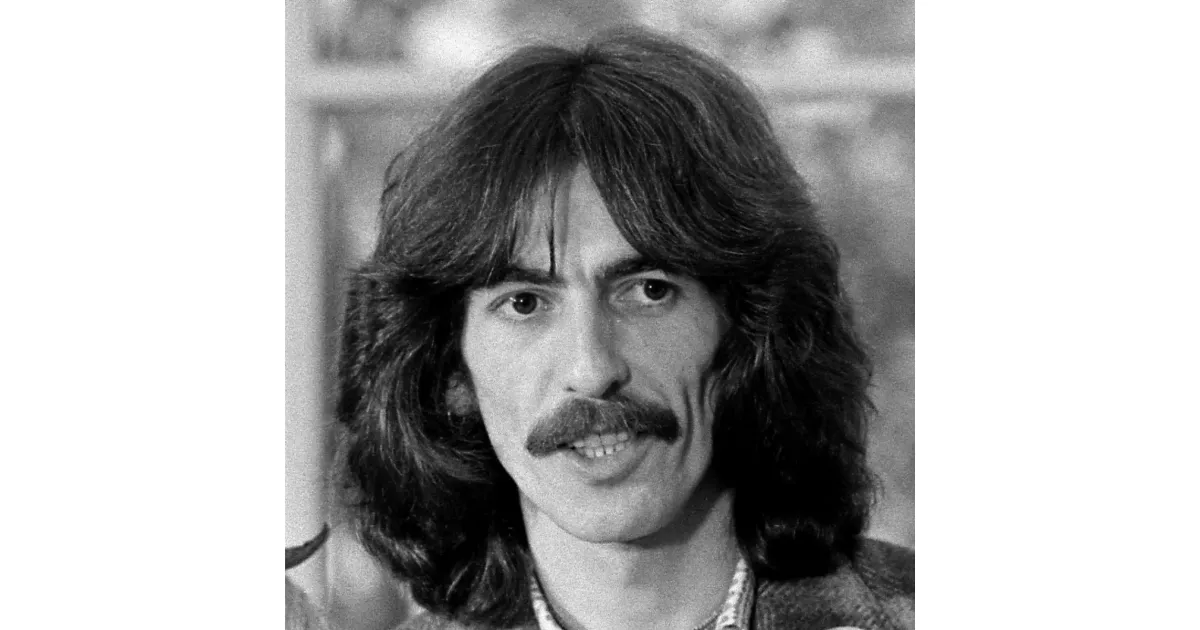Discover the defining moments in the early life of George Harrison. From birth to education, explore key events.
George Harrison was a renowned English musician, singer, and songwriter, best known as the lead guitarist of the Beatles. Often referred to as "the quiet Beatle," he significantly contributed to the band's success. Harrison's musical explorations extended beyond traditional rock, as he embraced Indian culture and incorporated Indian instrumentation and Hindu-aligned spirituality into the Beatles' music, broadening the scope of popular music. His unique guitar style and spiritual influences distinguished him within the group and as a solo artist.
February 1943: George Harrison's Birth
In February 1943, George Harrison was born in Liverpool, the youngest of four children.
1946: Publication of Autobiography of a Yogi
In 1946, Paramahansa Yogananda published "Autobiography of a Yogi," which George Harrison later became a lifelong advocate of.
1948: Enrolled at Dovedale Primary School
In 1948, George Harrison enrolled at Dovedale Primary School, beginning his formal education.
1949: Family Offered Council House
In the autumn of 1949, George Harrison's family was offered a council house, leading to their move to 25 Upton Green.
January 1950: Family Moved to Upton Green
In January 1950, George Harrison's family moved from 12 Arnold Grove to 25 Upton Green, Speke, into a council house.
1954: Attended Liverpool Institute High School for Boys
From 1954, George Harrison attended Liverpool Institute High School for Boys, continuing his education.
1955: Attended first race
In 1955, at the age of 12, George Harrison attended his first race, the British Grand Prix at Aintree.
1956: Epiphany with "Heartbreak Hotel"
In early 1956, George Harrison had an epiphany when he heard Elvis Presley's "Heartbreak Hotel," sparking his interest in rock and roll.
1959: Left Liverpool Institute High School for Boys
In 1959, George Harrison left Liverpool Institute High School for Boys. He felt that the school "moulded [students] into being frightened".
1960: Meeting Swami Vishnu-devananda
In 1960, During the filming of Help! in the Bahamas, The Beatles met Swami Vishnu-devananda, the founder of Sivananda Yoga, who gifted them signed copies of his book, The Complete Illustrated Book of Yoga.
1961: Buying a Gretsch Duo Jet
In 1961, George Harrison bought a Gretsch Duo Jet guitar secondhand, which he later posed with on the album cover for Cloud Nine in 1987.
August 1963: Writing "Don't Bother Me"
In August 1963, George Harrison wrote his first song, "Don't Bother Me", while sick in a hotel bed in Bournemouth. He considered it an exercise to see if he could write a song.
1963: Buying a Rickenbacker 425 Fireglo
In 1963, George Harrison bought a Rickenbacker 425 Fireglo guitar.
1963: Visit to Benton, Illinois
In 1963, George Harrison visited Benton, Illinois, to see his sister, becoming the first Beatle to visit the United States.
1964: Acquiring a Rickenbacker 360/12
In 1964, George Harrison acquired a Rickenbacker 360/12 guitar, which was the second of its kind to be manufactured.
1964: Meeting Pattie Boyd
In 1964, George Harrison met Pattie Boyd on the set of A Hard Day's Night.
1964: Purchase of Aston Martin DB5
In 1964, George Harrison purchased his first extravagant car, an Aston Martin DB5.
1964: The Quiet Beatle Nickname
In early 1964, when the Beatles arrived in the United States, George Harrison was nicknamed "the quiet Beatle" due to illness which resulted in minimal communication.
January 1965: Ownership of Aston Martin DB5
In January 1965, George Harrison bought new his Aston Martin DB5.
August 1965: Introduction to Indian Classical Music
In August 1965, George Harrison was introduced to Indian classical music and the work of Ravi Shankar, beginning his immersion in the genre.
1965: Acquiring First Fender Stratocaster
In 1965, George Harrison obtained his first Fender Stratocaster and first used it during the recording of the Help! album that February.
January 1966: Marriage to Pattie Boyd
On 21 January 1966, George Harrison married model Pattie Boyd, with Paul McCartney serving as best man.
June 1966: Meeting Ravi Shankar
In June 1966, George Harrison met Ravi Shankar at the home of Mrs Angadi of the Asian Music Circle and asked to become his student, to which Shankar agreed.
1966: Interests Moved Away From the Beatles
By late 1966, George Harrison's interests had moved away from the Beatles, influencing his creative choices and spiritual direction.
1966: Cliff Richard's conversion to Christianity
In 1966, Cliff Richard converted to Christianity, while George Harrison's spiritual journey was seen as a serious and important development that reflected popular music's increasing maturity.
1966: Marriage to Pattie Boyd
In 1966, George Harrison married model Pattie Boyd, marking a significant event in his personal life.
1966: Pilgrimage to India
In 1966, after The Beatles' last tour, George Harrison went on a pilgrimage to India with Pattie Boyd, studied sitar with Ravi Shankar, met gurus, and visited holy places.
1966: Received religious texts from Shankar
In 1966, after being given various religious texts by Shankar, George Harrison became a lifelong advocate of the teachings of Swami Vivekananda and Paramahansa Yogananda.
1966: Purchasing Epiphone Casinos
In early 1966, George Harrison and John Lennon each purchased Epiphone Casinos, which they used on Revolver.
1967: Inclusion on Album Cover
In 1967, George Harrison chose Eastern gurus and religious leaders for inclusion on the album cover for Sgt. Pepper's Lonely Hearts Club Band, highlighting his spiritual interests. His sole composition on the album was the Indian-inspired "Within You Without You", to which no other Beatle contributed.
1967: Harrison Initiates Transcendental Meditation
In 1967, George Harrison initiated the Beatles' embrace of Transcendental Meditation and later developed an association with the Hare Krishna movement, further exploring spirituality.
1967: Playing Rocky
In 1967, George Harrison played his Stratocaster, painted in a psychedelic design and nicknamed "Rocky", in the Magical Mystery Tour film.
July 1968: Receiving "Lucy" from Clapton
In July 1968, Eric Clapton gave George Harrison a Gibson Les Paul that had been stripped of its original finish and stained cherry red, which Harrison nicknamed "Lucy".
1968: Study meditation in Rishikesh
In 1968, George Harrison traveled with the other Beatles to Rishikesh in northern India to study meditation with Maharishi Mahesh Yogi.
1968: Became a Vegetarian
In the late 1960s, specifically in 1968, George Harrison became a vegetarian for religious reasons, remaining so until his death and advocating for its benefits.
December 1969: European Tour with Delaney & Bonnie and Friends
In December 1969, George Harrison toured Europe with Delaney & Bonnie and Friends, featuring Eric Clapton and others. During this tour, Harrison began playing slide guitar and started writing "My Sweet Lord."
1969: Production of Hare Krishna Mantra
In mid-1969, George Harrison produced the single "Hare Krishna Mantra", performed by members of the London Radha Krishna Temple and helped the Temple devotees become established in Britain.
1970: Bhola Cyclone and Bangladesh Liberation War
After the 1970 Bhola cyclone and the Bangladesh Liberation War, Ravi Shankar consulted George Harrison about providing aid to the people of Bangladesh.
August 1971: The Concert for Bangladesh
On August 1, 1971, George Harrison organized the Concert for Bangladesh at Madison Square Garden in New York. The event, featuring artists like Bob Dylan and Eric Clapton, aimed to raise funds for refugees during the Bangladesh Liberation War.
1971: Concert for Bangladesh
In 1971, George Harrison organized the Concert for Bangladesh with Ravi Shankar, setting a precedent for future benefit concerts.
1972: Donation of Letchmore Heath mansion
In 1972, George Harrison donated his Letchmore Heath mansion north of London to Hare Krishna devotees, which was later converted to a temple and renamed Bhaktivedanta Manor.
1973: Meeting Denis O'Brien
In 1973, Peter Sellers introduced George Harrison to Denis O'Brien, leading to a business partnership.
November 1974: Visit to the White House
On November 16, 1974, George Harrison and his touring entourage visited the White House at the invitation of President Gerald Ford's son, Jack.
1974: Separation from Pattie Boyd
In 1974, George Harrison and Pattie Boyd separated due to his infidelities.
1974: Harrison's statement about Lennon
In 1974, George Harrison described John Lennon as a 'saint' and 'heavy-duty', yet also acknowledged his flaws.
1974: Meeting Olivia Trinidad Arias
In 1974, George Harrison met Olivia Trinidad Arias, then a marketing executive for A&M Records, at the A&M Records offices in Los Angeles.
1974: Harrison comments on McCartney
In a 1974 BBC radio interview with Alan Freeman, George Harrison stated: "[McCartney] ruined me as a guitar player", but also acknowledged their bond.
1977: Divorce from Pattie Boyd finalized
In 1977, George Harrison's divorce from Pattie Boyd was finalized, with Boyd citing his infidelities and substance abuse as reasons.
1977: Recollection of LSD influence
In a 1977 interview, George Harrison recalled how his experiences with LSD in the mid-1960s served as a catalyst for his early pursuance of Hinduism.
August 1978: Birth of Dhani Harrison
On 1 August 1978, George Harrison and Olivia Trinidad Arias had their son, Dhani Harrison.
September 1978: Marriage to Olivia Trinidad Arias
On 2 September 1978, George Harrison married Olivia Trinidad Arias, a marketing executive for A&M Records and later Dark Horse Records.
1979: Release of George Harrison Album
In 1979, George Harrison released his self-titled album, "George Harrison", following his second marriage and the birth of his son Dhani. The album and the single "Blow Away" both reached the Billboard top 20.
1979: Pattie Boyd married Eric Clapton
In 1979, Pattie Boyd, George Harrison's ex-wife, married Eric Clapton after moving in with him following her separation from Harrison.
December 1980: Murder of John Lennon
On December 8, 1980, the murder of John Lennon deeply affected George Harrison. Although they had limited contact in the years prior, Harrison expressed great love and respect for Lennon.
1980: Supporting Greenpeace and CND
From 1980, George Harrison became a vocal supporter of Greenpeace and CND (Campaign for Nuclear Disarmament).
1985: Performance at Carl Perkins Tribute
In 1985, George Harrison made a guest appearance at a tribute to Carl Perkins, titled Blue Suede Shoes: A Rockabilly Session.
March 1986: Surprise Appearance at Charity Concert
In March 1986, George Harrison made a surprise appearance at the Birmingham Heart Beat Charity Concert, an event raising money for the Birmingham Children's Hospital.
February 1987: Performance with Taj Mahal and Bob Dylan
In February 1987, George Harrison joined Bob Dylan, John Fogerty, and Jesse Ed Davis on stage for a performance with blues musician Taj Mahal.
December 1988: Death of Roy Orbison
In December 1988, following the death of Roy Orbison, the Traveling Wilburys continued as a four-piece band.
1990: Supporting the Romanian Angel Appeal
In 1990, George Harrison helped promote his wife Olivia's Romanian Angel Appeal to aid Romanian orphans. He recorded a benefit single, "Nobody's Child", with the Traveling Wilburys.
April 1992: Benefit Concert at the Royal Albert Hall
On April 6, 1992, George Harrison held a benefit concert for the Natural Law Party at the Royal Albert Hall. It was his first London performance since the Beatles' rooftop concert in 1969.
May 1997: Final Television Appearance and Cancer Diagnosis
In May 1997, George Harrison made his final television appearance on a VH-1 special to promote Ravi Shankar's album, Chants of India. Shortly after, he was diagnosed with throat cancer.
January 1998: Attended Carl Perkins' Funeral
In January 1998, George Harrison attended Carl Perkins' funeral in Jackson, Tennessee, where he performed a brief rendition of Perkins' song "Your True Love".
December 1999: Attack at Friar Park
On December 30, 1999, George Harrison and his wife Olivia were attacked at their home, Friar Park, by Michael Abram, who stabbed Harrison multiple times.
February 2001: Yahoo online chat about McCartney
In February 2001, during a Yahoo online chat, George Harrison addressed his relationship with Paul McCartney, acknowledging their mutual annoyances but also recognizing their shared history.
May 2001: Cancerous Growth Removal
In May 2001, it was revealed that George Harrison had undergone an operation to remove a cancerous growth from one of his lungs.
November 2001: Radiotherapy Treatment in New York
In November 2001, George Harrison began radiotherapy at Staten Island University Hospital in New York City for lung cancer that had spread to his brain.
November 2001: Death of George Harrison
On November 29, 2001, George Harrison died at age 58 at a property belonging to McCartney in Beverly Hills, California, surrounded by family and friends.
2002: Abram Released From Psychiatric Institution
In 2002, Michael Abram, George Harrison's attacker, was released from a psychiatric institution and issued an apology to the Harrison family.
2002: Concert for George
In 2002, on the first anniversary of George Harrison's death, the Concert for George was held at the Royal Albert Hall, organized by Eric Clapton, to benefit the Material World Charitable Foundation.
December 2011: Auction of Aston Martin DB5
On 7 December 2011, George Harrison's 1964 Aston Martin DB5 was sold at auction in London for £350,000.
2025: Value of Harrison's First Guitar
Around the age of 14, George Harrison's first guitar cost £3.10s, which is equivalent to £110 in 2025, reflecting its value over time.
Mentioned in this timeline
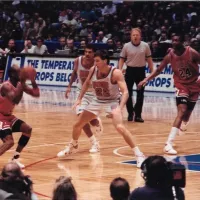
Basketball is a team sport played on a rectangular court...
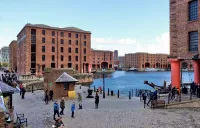
Liverpool is a port city and metropolitan borough located in...
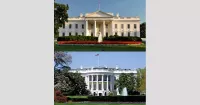
The White House located at Pennsylvania Avenue NW in Washington...
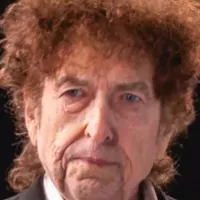
Bob Dylan is a highly influential American singer-songwriter renowned as...
California is a U S state on the Pacific Coast...

Elvis Presley the King of Rock and Roll was a...
Trending
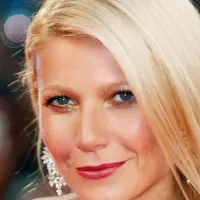
2 months ago Gwyneth Paltrow on Timothée Chalamet and Kylie Jenner's Relationship: 'Punk Rock'
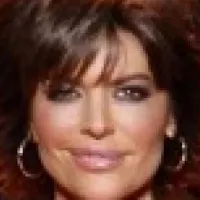
Lisa Rinna is an American actress television personality and model known for her roles on soap operas like Days of...
8 months ago Barcelona and Real Madrid to Clash in Copa del Rey Final El Clasico.
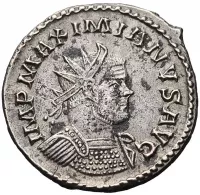
5 months ago Student Loan Repayment Troubles: 460K Denied, Backlog Alarms, Forgiveness Halted.

Amy Winehouse - was a highly acclaimed English singer and songwriter celebrated for her distinctive contralto voice and genre-bending music...
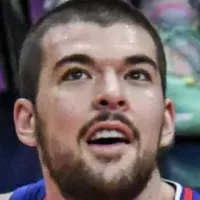
8 months ago Dyson Daniels Wins 2024-25 NBA Most Improved Player; Zubac, Cunningham Runners-Up
Popular

Candace Owens is an American conservative political commentator and author...

Ilhan Omar is an American politician currently serving as the...

XXXTentacion born Jahseh Dwayne Ricardo Onfroy was a controversial yet...
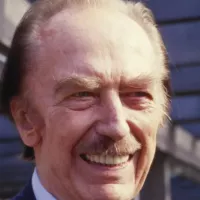
Frederick Christ Trump Sr - was an American real estate...
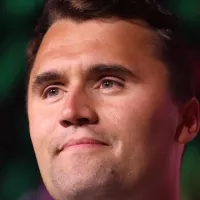
Charles James Charlie Kirk was a prominent American right-wing political...
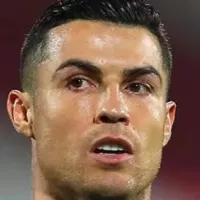
Cristiano Ronaldo often nicknamed CR is a Portuguese professional footballer...
